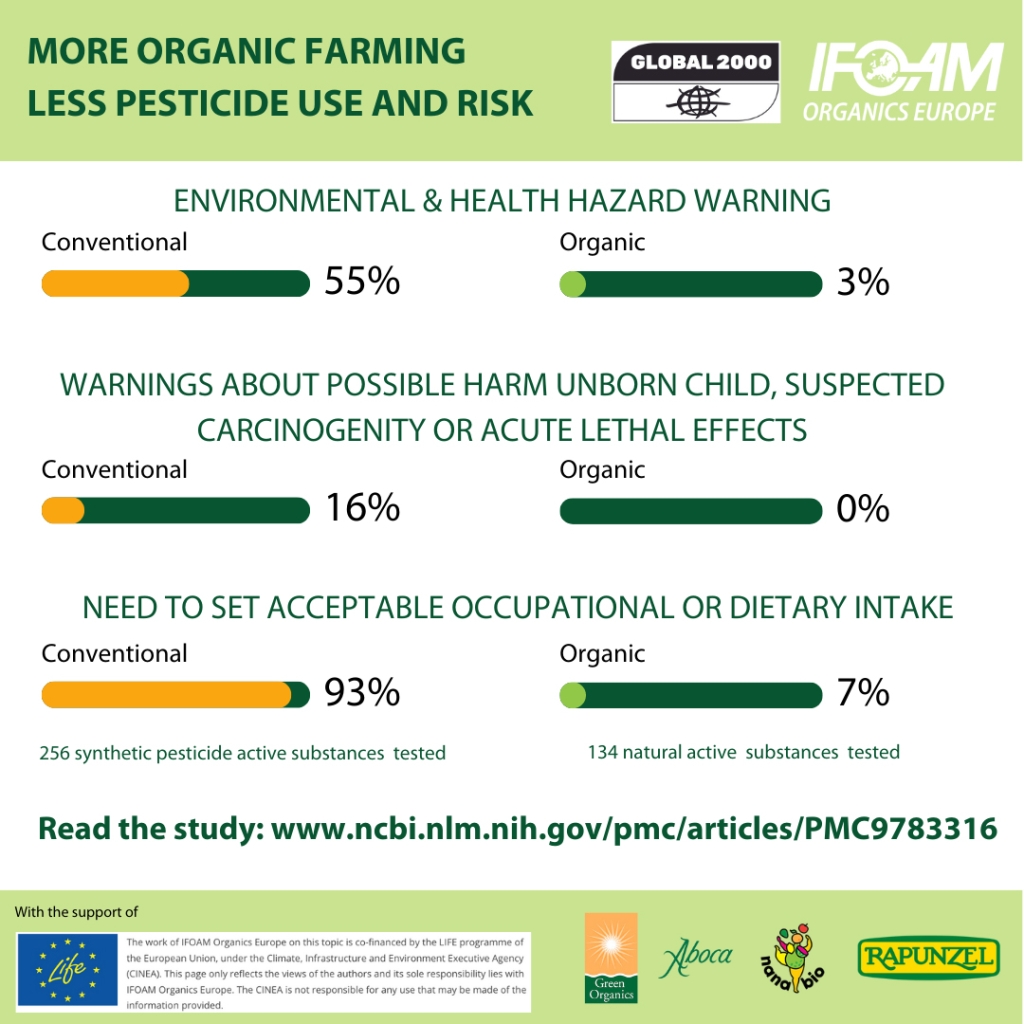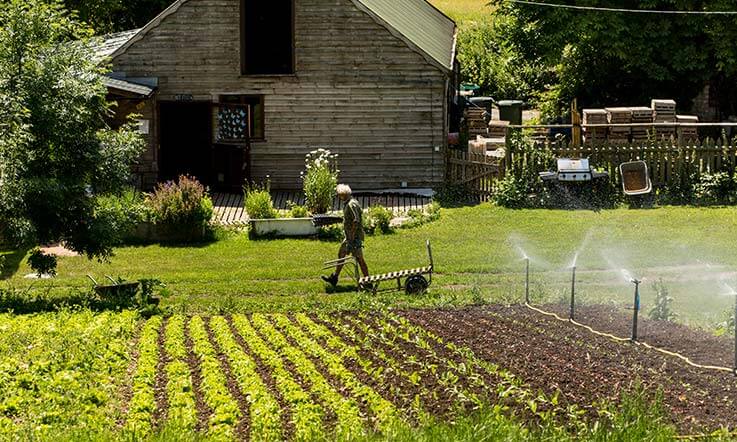
The European Green Deal’s targets of expanding organic agriculture to 25%, halving pesticide use and risk, and protecting sensitive areas from negative pesticide impacts by 2030 are increasingly making natural pesticides permitted in organic farming the subject of political interest. While many see natural pesticides as promising alternatives to synthetic-chemical pesticides, the European pesticide industry warns of “ecological trade-offs implied by an increase of organic agriculture” such as an “increased overall volume of pesticide use in Europe.”
On behalf of IFOAM Organics Europe, the European umbrella organisation for organic agriculture, GLOBAL 2000 subjected these alleged ‘ecological trade-offs’ to a fact check. Therein, the differences between the 256 pesticide active substances only permitted in conventional farming and the 134 substances also allowed in organic farming have been analyzed in terms of their hazard potentials and risks, as well as the frequency of their use. The toxicological evaluation on which this fact check is based, was then further developed and published in the peer reviewed scientific journal Toxics. The hazard classifications of the Globally Harmonized System (GHS) established by the European Chemicals Agency (EChA) and the dietary and occupational Health-Based Guideline Values established by the European Food Safety Authority (EFSA) in the approval process were used as a benchmark for the comparison.
Of the 256 mostly synthetic pesticide active substances allowed only in conventional agriculture, 55% carry health or environmental hazard warnings; for the 134 natural active substances that are also allowed in organic agriculture, only 3% do. Warnings about possible harm to the unborn child, suspected carcinogenicity, or acute lethal effects were found in 16% of the pesticides used in conventional agriculture, but in none of the pesticides approved for organic use. Setting health-based guidance values for acceptable occupational or dietary intake was considered appropriate by EFSA for 93% of conventional but only 7% of natural active pesticides substances.
“The differences we found are as significant as they are unsurprising when one takes a closer look at the origin of the respective pesticide active substances,” says Helmut Burtscher-Schaden, biochemist at GLOBAL 2000 and lead author of the study: “While around 90% of the conventional pesticides are of chemical-synthetic origin and underwent screening programs to identify the substances with the highest toxicity (and thus highest efficacy) against target organisms, the majority of the natural active ingredients are not even ‘substances’ in the strict sense, but living microorganisms. These make up 56% of the pesticides approved in organic farming. As natural soil inhabitants, they do not have hazardous substance properties. Another 19% of organic pesticides are classified from the outset as ‘low-risk active ingredients’ (e.g. baking powder, ferric phosphate) or approved as basic substances (e.g. sunflower oil, vinegar, milk).”
Jan Plagge, president of IFOAM Organics Europe, adds, “It is now clear that synthetic active substances allowed in conventional farming are way more hazardous and problematic than natural active substances approved in organic farming. And let’s remember that organic farms focus on preventive measures such as using robust varieties, sensible crop rotations, maintaining soil health and increasing biodiversity on the field in order to avoid the use of external inputs. This is why on around 90% of farmland (especially in arable farming), no pesticides are used at all, not even natural substances. Nevertheless, if pests get out of hand, using beneficial insects, microorganisms, pheromones, or deterrents is organic farmers’ second choice. Natural pesticides, such as the minerals copper or sulfur, baking powder or plant-based oils, are a last resort, for specialty crops like fruits and wine.”
Jennifer Lewis, Executive Director of the International Biological Manufacturers Association (IBMA), points to the ‘enormous potential’ of the natural crop protection products and methods already available today, for conventional as well as organic farmers: We need to speed up the approval process for biological control, so these products are available for all farmers in Europe. This will support the transition to a more sustainable and biodiversity-friendly food system outlined in the European Green Deal.”
Lili Balogh, President of Agroecology Europe and farmer emphasizes: “The implementation of the Farm to Fork strategy and the Biodiversity strategy with its pesticide reduction targets is essential to establish resilient agroecological food systems in Europe – and beyond. The goal of agriculture, besides providing food, feed and fuel, should always be to promote biodiversity and associated ecosystem services as much as possible so that the use of external inputs becomes obsolete. With preventive and natural measures in crop protection, such as species and variety diversity, small-scale farming structures, and no synthetic pesticides, we create a truly sustainable agricultural and food system that survives crises well.”
Scientific paper: Toxicological comparison of pesticide active substances approved for conventional vs. organic agriculture in Europe
